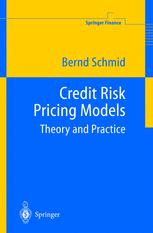

Most ebook files are in PDF format, so you can easily read them using various software such as Foxit Reader or directly on the Google Chrome browser.
Some ebook files are released by publishers in other formats such as .awz, .mobi, .epub, .fb2, etc. You may need to install specific software to read these formats on mobile/PC, such as Calibre.
Please read the tutorial at this link: https://ebookbell.com/faq
We offer FREE conversion to the popular formats you request; however, this may take some time. Therefore, right after payment, please email us, and we will try to provide the service as quickly as possible.
For some exceptional file formats or broken links (if any), please refrain from opening any disputes. Instead, email us first, and we will try to assist within a maximum of 6 hours.
EbookBell Team

4.7
76 reviewsThis new edition is a greatly extended and updated version of my earlier monograph "Pricing Credit Linked Financial Instruments" (Schmid 2002). Whereas the first edition concentrated on the re search which I had done in the context of my PhD thesis, this second edition covers all important credit risk models and gives a general overview of the subject. I put a lot of effort in explaining credit risk factors and show the latest results in default probability and recovery rate modeling. There is a special emphasis on correlation issues as well. The broad range of financial instruments I consider covers not only defaultable bonds, defaultable swaps and single counterparty credit derivatives but is further extended by multi counterparty in struments like index swaps, basket default swaps and collateralized debt obligations. I am grateful to Springer-Verlag for the great support in the realiza tion of this project and want to thank the readers of the first edition for their overwhelming feedback. Last but not least I want to thank Uli Göser for ongoing patience, en couragement, and support, my family and especially my sister Wendy for being there at all times. BemdSchmid Stuttgart, November 2003 Cpntents 1. Introduction. . . . . . . . . . . . . . . . . . . . . . . . . . . . . . . . . . . . . . . . . . . . . . 1 1. 1 Motivation. . . . . . . . . . . . . . . . . . . . . . . . . . . . . . . . . . . . . . . . . . . . 1 1. 2 Objectives, Structure, and S:ummary . . . . . . . . . . . . . . . . . . . . . . 5 2. Modeling Credit Risk Factors. . . . . . . . . . . . . . . . . . . . . . . 13 . . . . . . 2. 1 Introduction. . . . . . . . . . . . . . . . . . . . . . . . . . . . . . . . . . . . . . . . . . . 13 2. 2 Definition and Elements of Credit Risk . . . . . . . . . . . . . . . . 13 . . . . 2. 3 Modeling Transition and Default Probabilities. . . . . . . . . . . . . 14 . 2. 3. 1 The Historical Method . . . . . . . . . . . . . . . . . . . . . . 15 . . . . . .